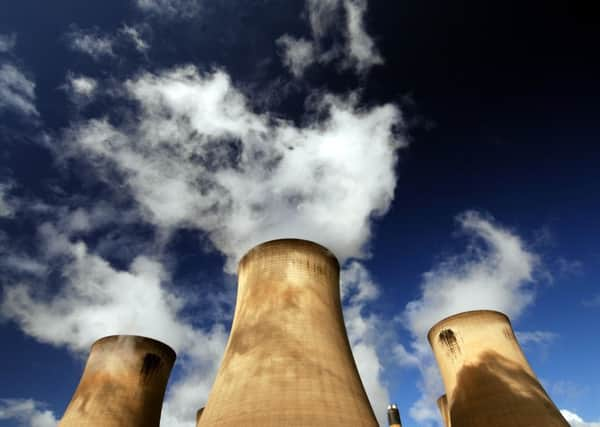Nigel Adams: Restoring sense and good value to Drax and renewable energy


Many of my colleagues would argue that this is long overdue. Indeed, a year ago I introduced the Onshore Wind Turbine Subsidies (Abolition) Bill that sought to achieve the exact same objective, on the basis that one man’s subsidy is another man’s tax. It is crucial to make sure that when we spend money, we do so wisely – and minimise the cost to the bill payer.
While I’m pleased to say that the Energy Bill will finally put this particular issue to bed, a new report published by NERA Economics and Imperial College London demonstrates that there is clearly more work to do if we are to ensure we are backing the most affordable renewables available.
Advertisement
Hide AdAdvertisement
Hide AdTheir research shows that the costs of supporting intermittent renewables – such as onshore, offshore wind and solar – are even greater than we have been led to believe.
This is because the mechanism the Government currently uses for awarding renewable subsidies, known as Contracts for Difference, only takes into account the costs of building and operating these technologies, and not the additional costs they place on the UK’s energy grid as a whole – which are very substantial.
These so-called “system costs” are not widely known or appreciated by the public, but these are costs that we are all ultimately paying for through our household energy bills, in addition to the separate green levy we pay to support renewables.
For example, when the wind stops blowing and the sun stops shining – which as any good resident of these Isles knows is most of the year – the energy generated by wind and solar farms drops significantly. This forces the hand of National Grid, who manage the UK energy’s grid, to pay a back-up generator (usually gas) to switch on and generate power to fill the void. This action comes with an associated cost.
Advertisement
Hide AdAdvertisement
Hide AdBecause these intermittent renewables are unreliable, they also require much larger amounts of back-up than traditional coal or nuclear power stations, which have far greater control over how much electricity they generate and when. Again, this comes with an associated cost.
Now, if you think the generators who create these costs actually pay for them, or that the Government takes these issues into account when deciding what renewable projects to support, you would be thinking along sensible lines. But you would be wrong.
In a perverse outcome, not only does this benefit intermittent technologies by making them look cheaper on paper than they really are, it also handicaps other technologies which actually are available when needed – most notably biomass and natural gas.
The NERA and Imperial report also points to a cost- effective solution. Biomass is the most affordable renewable technology available when whole system costs are factored in. If it was allowed to compete on a level playing field with other renewables, it could save the UK around £1.9 to £2.2bn by making the energy grid more reliable and avoiding unnecessary system costs. This would equate to an average saving of £73 to £85 on every household bill in the country.
Advertisement
Hide AdAdvertisement
Hide AdThe reason biomass is that much cheaper is this. Unlike intermittent renewables like wind and solar, biomass is reliable, flexible and re-uses existing infrastructure by converting existing power stations to use compressed wood pellets instead of coal.
The last point is particularly pertinent and crucial given that we are living through a volatile period when coal power stations are closing across the country. Eggborough, Ferrybridge, Fiddlers Ferry and Rugeley have all in recent months announced their intention to close or at best operate on a very limited basis.
This is terrible news both for the communities living in those areas and the UK’s energy security. Since the beginning of this year there have been 2.5GW of coal closures announced, on top of the 4.9GW announced during 2015 – a significant amount of power on the grid. These closures are creating real security of supply concerns and, in recent months, have forced the National Grid to rely on expensive emergency measures to keep our lights on.
If the Government really is keen to take coal off the grid by 2025, why not do this quickly and cheaply by supporting biomass conversions?
Advertisement
Hide AdAdvertisement
Hide AdTo do nothing and continue on with the status quo would simply be inconsistent with its oft-repeated commitment to securing the country’s renewable future at the least cost to consumers.
Nigel Adams is the Conservative MP for Selby and Ainsty.